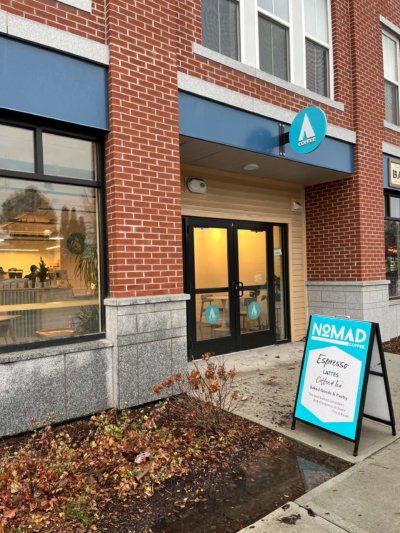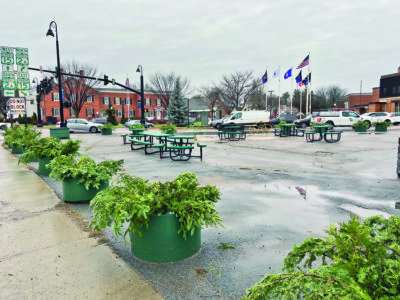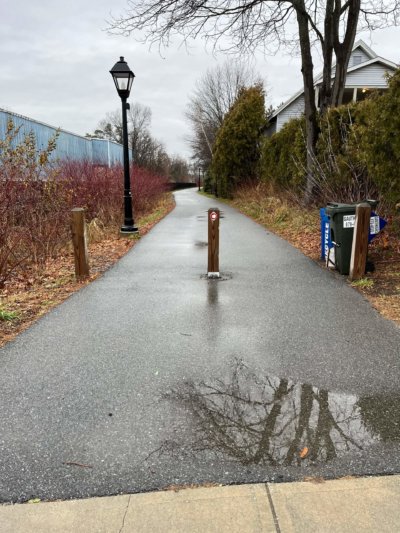Community Heart & Soul to kick off next month
Who decides the future of a town?
According to Vermont’s Orton Family Foundation, it should be everyone who lives there.

Raised in South Burlington, Community Heart & Soul executive director Mark Sherman lives in Charlotte.
That may be easier said than done. But next year, Charlotte will become Vermont’s third municipality to undertake a process called Community Heart & Soul, which promises to engage a wide swath of residents in a two-year series of discussions about what they value about their town.
The organization that developed the curriculum boasts that, nationwide, it’s helped more than 100 towns gather diverse input for local planners while strengthening bonds among neighbors and spurring volunteerism. Vermonters in Essex and Canaan reported positive experiences, with a few caveats.
Planning commissioners Kyra Wegman and Robert Bloch told The Charlotte News, tentatively, that the first local meeting would take place on Friday, Jan. 20, at 5 p.m. at the Charlotte Congregational Church.
Their hope is for people to come to the church from afterschool activities for some chili and pie. Wegman said, “We can talk about what this is and do a few sample conversations so that people know what we’re up to. Hopefully there’ll be music and good cheer, and we can all sort of feel why we’re so invested in Charlotte.”
As a booster for the event, Wegman sought to downplay her role as a public official, characterizing the program as a citizen-led project, not a government initiative. The Charlotte Selectboard has expressed support for bringing Community Heart & Soul to town, but it has not yet fielded a request for its official sanction, let alone for municipal funding.
And while the planning commission anticipates reviewing public comments collected during the process when it updates the town plan in 2026, supporters believe Community Heart & Soul will yield an impact extending far beyond that document.
“This could be a cool way just to get people together and to elevate the level of discourse,” Bloch said. “Even though, with this little town, we think we’re all lovey and everything, we have some of the same divisions that are around the country.”
Community Heart & Soul origins
Community Heart & Soul has its roots in Weston where Lyman Orton, heir to the Vermont Country Store, served on a planning commission that, in his view, mismanaged the public engagement process around a controversial proposal for a wildlife theme park. This created long-lasting conflicts among locals.

Previously a mobile cart, Nomad Coffee moved last year into a brick-and-mortar location at 3 Maple Street in Essex Junction.
Since 1995, Orton’s private foundation — which has 11 employees (seven in Vermont) and, as of its last public tax filing, $20.4 million in assets — has aimed to help small towns avoid the same fate. More recently, it adopted the trade name Community Heart & Soul, devoting itself exclusively to promoting its namesake method of community engagement.
Its executive director, Mark Sherman, lives in Charlotte. He pitched the town on Community Heart & Soul earlier this year.
“We don’t come in with any political, social or religious agenda,” Sherman said. “We’re simply a framework to help the community figure out what its priorities are, based on what the residents feel is most important.”
Senior director Sara Lightner described a four-step process that starts by identifying “formal and informal groups” in the area. These groups supply “stories,” whose common themes become the town’s “Heart & Soul value statements.” The statements generate ideas for projects, followed by a plan to execute them.
Implementation is meant to continue long after Orton has left town.
“Something like a sidewalk, that probably needs to go back to the municipality,” Lightner observed. “But if we want to have a story-walk along our riverfront, maybe the library says, ‘Hey, that’s totally up our alley.’”
Ideally, town pride will undergird the whole effort.
Champlain College professor of management Lindsey Godwin linked Community Heart & Soul to a technique called “appreciative inquiry.” Godwin directs the David L. Cooperrider Center for Appreciative Inquiry.
In the 1980s, academics formulated the model as a new way to promote change within businesses and other organizations, but Godwin pointed out that cities like Cleveland, Cincinnati and Tampa later adopted it for the purpose of community development.
“Many of the traditional strategic planning processes try to come from a neutral or a deficit base, where they start with questions about what’s wrong, what’s broken here,” Godwin explained. “Appreciative inquiry has been an approach that has sort of flipped the script on the change conversation to say that, in every community, in every organization, in every team, in every individual, there are successes that have gone under-utilized, under-noticed, under-explored.”
By Lightner’s account, for Community Heart & Soul, the model depends upon local buy-in.
“Definitely there are places where it just hasn’t flown, so to speak,” Lightner admitted. “And one example I can give is of a community where the volunteer team that got started to really drive the work — frankly, very few of them were actually from the community. A lot of them were people who worked in nonprofits or different organizations, even a couple of municipal people who didn’t actually live in the community.”

Photo by Brett Yates.Now under municipal ownership, the asphalt lot in front of the Firebird Cafe at Essex Junction’s Five Corners is on its way to becoming a pocket park, with development ongoing.
Resident leadership need
Even more than other Heart & Soul towns, Charlotte may have to rely on ordinary residents’ willingness to roll up their sleeves. When Essex partnered with Orton in 2012, during an earlier iteration of the program, it became one of just five towns nationwide to receive a $100,000 grant, which it used to hire a pair of full-time local consultants to coordinate planning alongside foundation staff.
Today, with Heart & Soul expanding fast, Charlotte expects to receive just $10,000 from the foundation. The grant requires a plan for a local cash match, and to that end, a local high schooler has set up a website — heartandsoulcharlotte.org — that can accept tax-deductible donations through a Shelburne-based fiscal sponsor. Bloch acknowledged that, in the future, Charlotte’s Community Heart & Soul team may ask for an allocation from the municipal budget, which already supports various non-governmental organizations in town.
As a condition of its disbursal, the Orton grant will help pay for the guidance of a “certified coach” from a pool of third-party community development consultants trained by the foundation as experts in Community Heart & Soul. But Charlotte will also need someone to take on the potentially unpaid local administrative work of scheduling meetings and compiling information.
“Our assumption is that we are not going to have to hire a full-time project coordinator, and that through either volunteers or part-time help from someone from the local colleges or universities for whom this would be a relevant internship or something, we would be able to do it,” Bloch said.
An Addison County resident, Lindsay Varner, helped persuade Bloch and Wegman that Charlotte could benefit from Community Heart & Soul.
Before becoming the director of the Rokeby Museum in Ferrisburgh, Varner worked for the Cumberland County Historical Society, which, through the Pennsylvania Humanities Council, received an Orton grant in 2016 on behalf of a seven-municipality area in the vicinity of Carlisle, Penn. With a doctorate in history, she steered an approach to community revitalization centered on the region’s past.
Among several endeavors that grew out of Community Heart & Soul discussions, the best-known — the Mt. Tabor Preservation Project — took up the task of rehabilitating a circa-1870 Black church.
“I was told over and over again I needed to talk to the Gumby family because they had been there for multiple generations,” Varner recollected. “They gave me this incredible 45-minute interview, talking about the Black history of the area that’s being lost. Their grandfather, who had been enslaved, had moved to the area and had helped to build this church. They kept talking about the church behind their house, and it was so overgrown you couldn’t see it.”
The log structure “is now a National Register property. So, it became this huge project that then spiraled into more projects across the county to start to understand and build a more complete narrative of the African-American history in the county,” Varner recounted.
Change in Canaan took time
Wegman and Bloch have also talked to Trish Sears and Steve Mason of Orleans County, a pair of married consultants who coached the town of Canaan, in Vermont’s northeastern corner, through its Community Heart & Soul process. Sears and Mason appear poised to take on the same role in Charlotte.
When Sears was the director of the Newport City Renaissance Corporation, she and Mason encountered Orton through a program called Community Matters, which, as a precursor to Community Heart & Soul, came to Newport in 2012, leading to the grassroots development of a neighborhood garden on donated private land.
“People have become dependent on public services to cure their problems,” Mason said. “I think the Heart & Soul process tells people you can make the change without going that way.”

Essex Junction turned a disused segment of train track into a multi-use path in 2016.
Sears described Community Heart & Soul as a “strengthening” of a town’s social fabric.
“The process is never a smooth one because you’re dealing with so many different kinds of people,” she said.
In Canaan, Community Heart & Soul lasted four years, starting in 2015. Resident Frank Sawicki attributed delays partly to the municipality’s remote location, which, by his recollection, had made accessing meetings a challenge for its out-of-town coaches.
“It was a little bit slower than we thought,” Sawicki said.
In the end, however, it produced a 501(c)3, Canaan Naturally Connected, that continues to plan beautification projects; charity drives; and community events, such as teen nights at the American Legion and a townwide scarecrow-building competition. Sawicki sits on the board.
Before Canaan Naturally Connected, he felt that the town “wasn’t cohesive. We had groups doing the same thing and repeating it, and we didn’t know.”
As a “middleman” for various nonprofits, Canaan Naturally Connected has established communication channels extending into New Hampshire and Quebec. And according to Sawicki, its presence “relieves” local government of some of the burden of managing community affairs.
“If it’s something in that category, then they don’t have to deal with it, really,” Sawicki said. “At the start, it was kind of a battle — like, who was in charge? But then, as we communicated more that we’re just wanting to help with the municipalities, they started opening up.”
By Sawicki’s estimation, Canaan Naturally Connected has achieved 85 percent of the goals articulated during Community Heart & Soul. But can-do spirit does seem to have its limits — specifically, when it comes to the development of much-needed housing for the elderly.
“That hasn’t really come off the ground because we needed land. We needed grants and things like that,” Sawicki said. “It’s very hard to do that when you have volunteerism.”
Sawicki also mentioned Canaan’s demographic struggle to attract and retain working-age adults, particularly between ages 18 and 30. In 2009, Ethan Allen Interiors Inc. laid off 238 workers at Canaan’s Beecher Falls plant, once the largest furniture factory in the eastern United States.
Although Sawicki reported some success in the town’s effort to reverse the trend, the most recent census showed a continued decline for Canaan’s population, which dropped from 972 to 896 between 2010 and 2020.
In the growing Burlington metropolitan area, the relatively bustling, populous town of Essex offered a different venue for Community Heart & Soul between 2012 and 2014.
In the telling of State Representative Lori Houghton of Essex Junction, Community Heart & Soul conversations set parameters for economic development and major investments that followed, filling vacant downtown buildings and turning an asphalt lot into a pocket park.
“We had some crime, and we had one coffee shop, which really was more of a deli than a coffee shop. We said we really want to have more places for the community to go to. And we now have four coffee shops,” Houghton said. “We have definitely more of a vibrant downtown than we had when we started, and to me that’s a success.”
Couldn’t stop Essex, Essex Junction split
As in Canaan, Essex residents incorporated a 501(c)3, Heart & Soul of Essex, to carry out projects, but it disbanded last year. For Dana Hanley, who served as Essex’s community development director between 2005 and 2019, the data collected during the process found its most crucial application in the rewriting of the town plan.
The 2016 Essex Town Plan won awards from the Vermont Planners Association and the Northern New England chapter of the American Planning Association. Hanley attributed its success to the plethora of information gathered from Community Heart & Soul’s public engagement.
“What Orton promised was to bring in a more diverse and broad participation than the town usually can achieve, and they delivered,” Hanley said. “It wasn’t just the usual suspects — it was high school students, members of the BIPOC community, members of the clergy, the kinds of representation that we rarely see at planning meetings at night.”
“Community outreach is the most expensive part of community planning processes, and Orton makes sure to get the word out on as many platforms as it takes,” she said. “They develop very sophisticated graphics and logos. It’s a very professionally presented process, and I think that’s what attracted people’s attention to it.”
Meetings offered food and childcare. Not everyone attended, but local organizers made efforts to locate no-shows at the local farmers market or to reach them by inviting them into their own homes for coffee and cookies, which would accompany a group conversation facilitated by a member of the Community Heart & Soul steering committee.
Even so, Essex’s biggest change in recent years took place in seeming contravention of one of Community Heart & Soul’s core objectives. The process had aimed to “find common ground” between the town of Essex and its village of Essex Junction, which Orton’s report described as “overlapping municipalities grappling with how their futures fit together” amid “sometimes factious” relations.
Earlier this year, Essex Junction voted to separate from Essex after a final failed attempt at a merger that would have gradually equalized the tax burdens of village and town residents.
“Merger and separation were, bottom line, about money and taxes and responsibility, whereas Community Heart & Soul was about what are the values we hold dear,” said Essex Junction’s Elaine Haney, a former village trustee. “We all want walkable communities. We all want safety. We all want well-being and good health for our residents. Those things are universal.”
In Haney’s view, a “very vocal but small group of people” and their “tactics of division” prevented an agreeable resolution to the financial dispute.
“I don’t know that Heart & Soul could have gotten us through it,” she said. “Well, it didn’t get us through it.”
The bitter taste of the subsequent separation hasn’t erased Haney’s fond memories of Community Heart & Soul, which she credited as a driver for new multifamily housing in Essex Junction, an expansion of the recreation department’s afterschool programming, and a bike path from Central Street toward the high school. She wishes Essex well, and she praised its town plan.
The plan “has a really cool vision for that strip between the outlets and the town green,” Haney said. “It’s in jeopardy now because they’re going to have to spend so much money trying to recoup the taxes that they’re losing from the village.”

